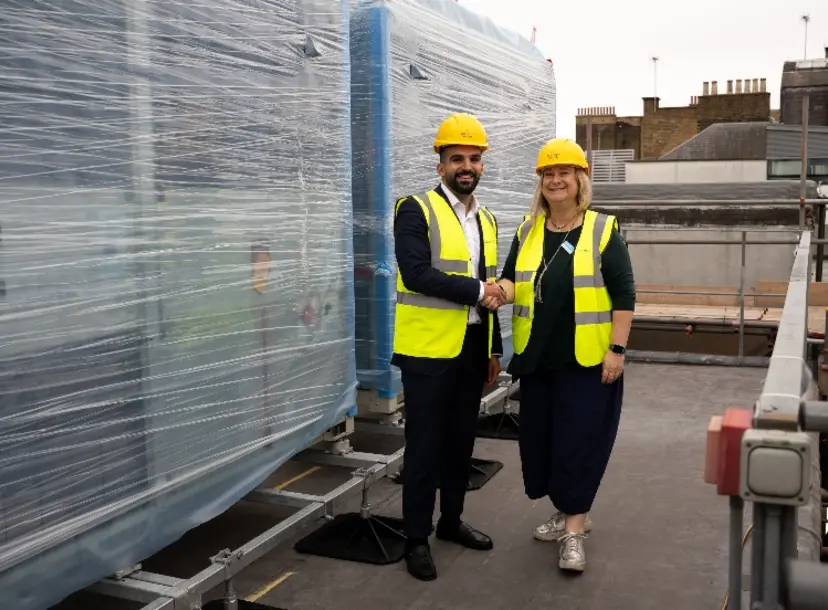The Royal Institution (Ri) is on track to achieve a remarkable 35% reduction in carbon emissions in its Grade I listed Georgian building, thanks to a £4.35 million investment from the Mayor of London.
The pioneering initiative demonstrates that London’s historic buildings can be transformed into sustainability leaders without compromising architectural heritage. The transformation has been achieved through new air source heat pumps, upgraded LED lighting in the Ri’s 225-year-old Theatre, significantly improved thermal insulation, and a new intelligent building management system.
Natural gas has also been eliminated for all but the necessary scientific use in the Ri’s working laboratories, while an innovative new solar-reflective film – pioneered by a UK start-up company supported through the Greenhouse accelerator programme at Undaunted, the Ri’s climate-tech partnership with Imperial College London – has been applied to the building’s Georgian windows.
Speaking during a visit to the Ri to review the impact of the Mayor of London’s investment following substantial completion of Phase One works, Deputy Mayor of London for Environment and Energy, Mete Coban, said: “The climate crisis is the most urgent challenge of our times. With existing building stock contributing to nearly three quarters of London’s carbon emissions, it’s vital we work to make our older buildings greener.
“The transformation of the Royal Institution shows that heritage and sustainability can work hand in hand, providing a model for historic buildings across the capital and beyond. The Mayor’s investment in the retrofitting of this building is an important part of our commitment to building a better, greener London for everyone.”
Katherine Mathieson, Director of the Royal Institution, said “Where better to demonstrate the role our much-loved historic buildings can play in the fight against the climate crisis, than the place where John Tyndall discovered the greenhouse effect in 1861?
“The Mayor of London’s visionary support has enabled us to prove that the UK’s hard-to-tackle older buildings can achieve dramatic carbon reductions while preserving and protecting centuries of history.”
The Royal Institution's home on Albemarle Street has been a centre for scientific discovery for over 225 years, with parts of the building dating from 1705. The sustainability transformation underway used advanced digital modelling – a 'digital twin' of the building – to identify the most effective sustainability measures before implementation. This scientific approach ensured maximum impact while respecting the building's historic significance, supported by the appointment of leading Heritage consultant Coniston as principal contractor.
The work is part of the Royal Institution's ‘Zero Ready’ fundraising campaign and supports its Undaunted climate innovation partnership with Imperial College London.
With Phase one now substantially complete following the installation of the rooftop air source heat pumps last month, the Mayor of London supported works are due to complete early next year. The Ri is actively fundraising to support additional works needed to reach an ambitious net zero target.
